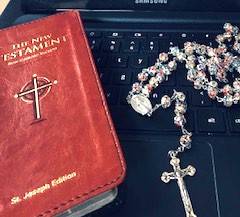
What is an Adversary Character in Literature?
According to the Merriam-Webster Dictionary, the word adversary is from the Latin adversarius, which means “turned toward” or “antagonistic toward.” All villains are adversaries, but not all adversaries are villains. An adversary is not necessarily evil. He or she is a character who opposes or blocks your protagonist from changing or carrying out their mission or quest. And although your adversary may be evil, he is not the main villain of the story. An adversary may even be sympathetic to the reader because of a common and very human flaw or a past, which explains his behavior in blocking the protagonist.
For example, in a murder mystery, a hard-nosed Chief of Police can attempt to rein in your detective and stop him from doing what he wants to do. The Chief may be someone who strictly adheres to the rules because he has seen tragedies occur when the rules are broken. Your hero does not. The murderer is your villain, but the Chief is your adversary character.
Another example would be a character who is competing for the same goal as your protagonist. The competing character is not evil but may keep your protagonist from achieving what he wants. Suppose they are both competing for a spot in a musical band or a promotion. The protagonist sees the competitor as an adversary. Can an adversary be evil? Yes, but the degree is up to you as the author. And the adversary character is not the main villain of your tale.
How does an author create an Adversary Character?
- An adversary is usually stronger or at least equal to your protagonist. For example, in a romance novel, he or she can be an old boyfriend or girlfriend who becomes the competition for the hand of your hero or heroine.
- Give your adversary motivation. Your reader needs to know what drives your adversary and why he opposes or blocks your protagonist. In the Aurora Teagarden series, Aurora’s adversary is her fellow librarian. She is not evil, but just someone who loves order and schedules. Her strict personality reins in Aurora, who wants to be free to follow her leads
- Make your adversary character interesting. Give them a story of their own. Make the reader care about the person. In real life, each person has a history that drives them. To make any character less than a well-rounded person is cheating the reader and diminishing your work. It also adds flavor to your work. We all have adversaries in our life and can relate to any protagonist who struggles against the obstruction the adversary puts up.
Can there be more than one Adversary Character?
Yes, since we have already mentioned the Aurora Teagarden series, let’s look at her. She not only has her co-worker and fellow librarian as an adversary. Aurora also has a policewoman who tries to squelch her investigations at every turn. The policewoman thinks that Aurora is sticking her nose into police business and jeopardizing each investigation. They have a very sticky relationship. As if that weren’t enough, Aurora also has her mother trying to block her at every turn. Her mother is only worried about her safety but, while very loving, is still a barrier to Aurora finding the real villain.
Let’s look at another example. The “Little House” books is a series of American children’s novels written by Laura Ingalls Wilder, based on her childhood and adolescence in the American Midwest between 1870 and 1894. In this series, the main protagonist is a young girl named Laura Ingalls. Her main adversary character is another girl named Nellie Olson. However, in different tales, she can have new adversaries, even Nellie’s mother, Mrs. Olson.
In The Lord of the Rings, Sauron is the villain, but Gollum is the adversary Character. He is much eviler than most adversary characters, but he is sympathetic because he is obsessed with the ring, which has destroyed his life. Frodo needs to destroy the Ring to destroy Sauron. Gollum and his obsession hamper him at every turn. However, in different sections of his adventure, Frodo faces other adversaries who are determined to take the ring.
Why create Adversary Characters?
Simple children’s books are often reduced to just two characters. the hero and the villain. However, even children’s books grow more exciting and rich when they include the Best Friend, Mentor, and Adversary Characters.
They give the protagonist a multi-faceted supporting cast. They allow you to have numerous twists and turns in your plot. And they give your tale the sense of authenticity since a vast cast of characters imitates real life. I create my characters before I ever put my pen to paper. So have some fun—create some memorable adversaries for your hero.
Next week we will conclude our series on Characters by addressing our villains.